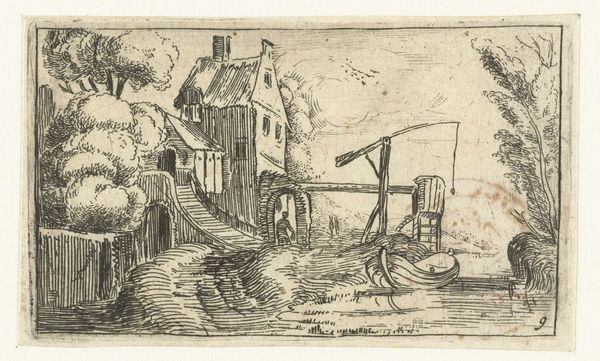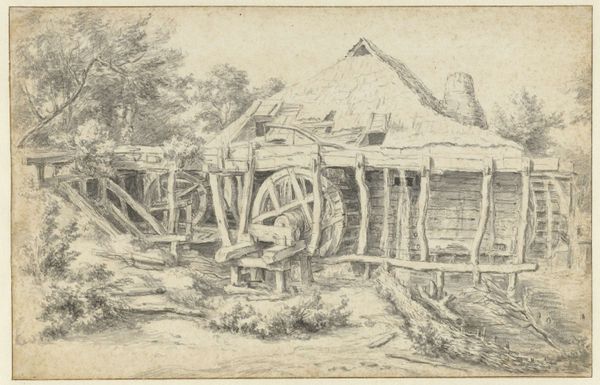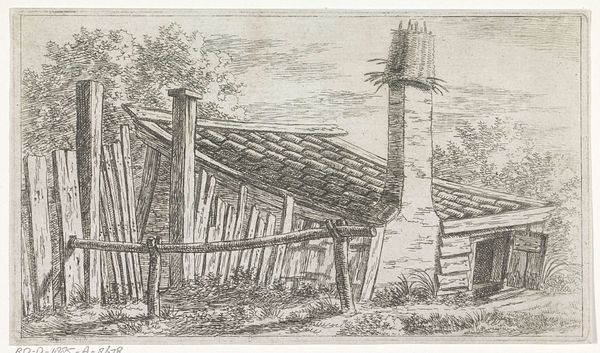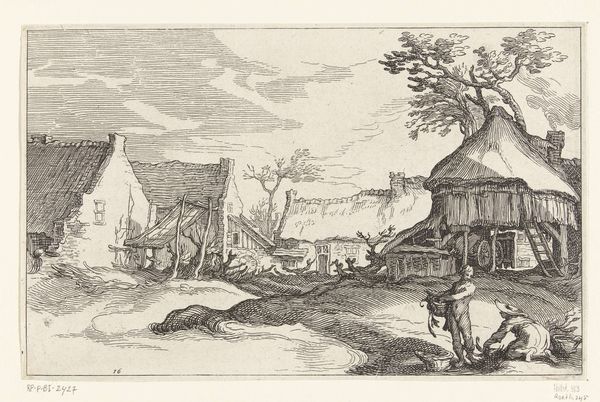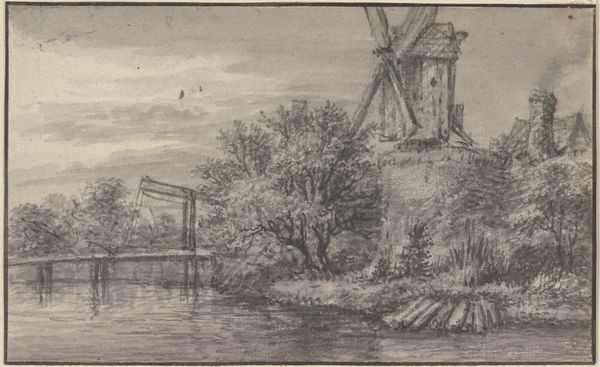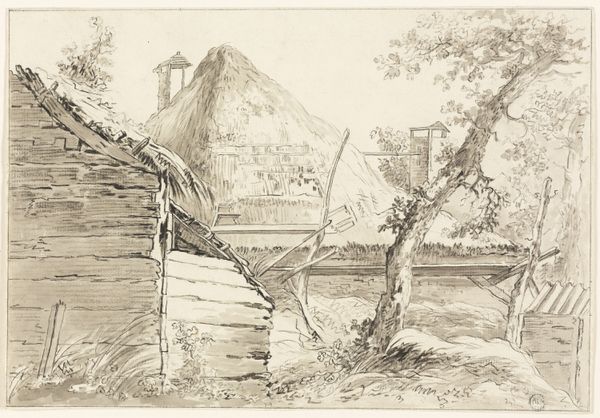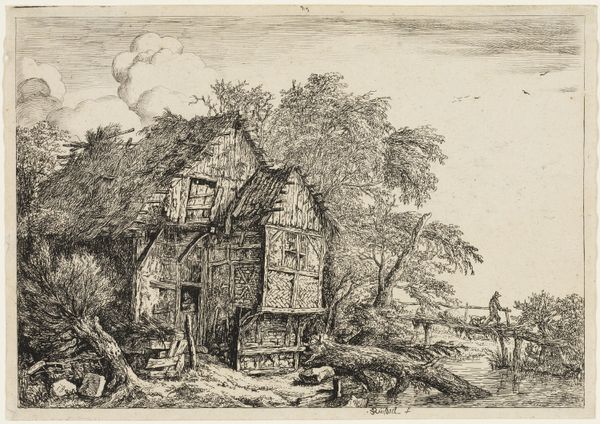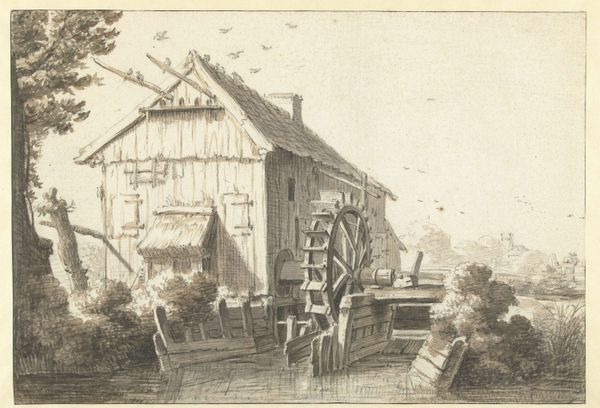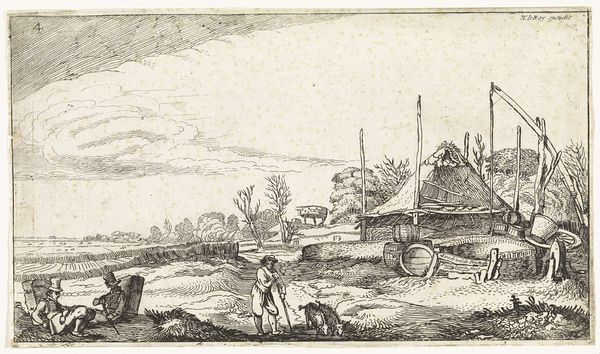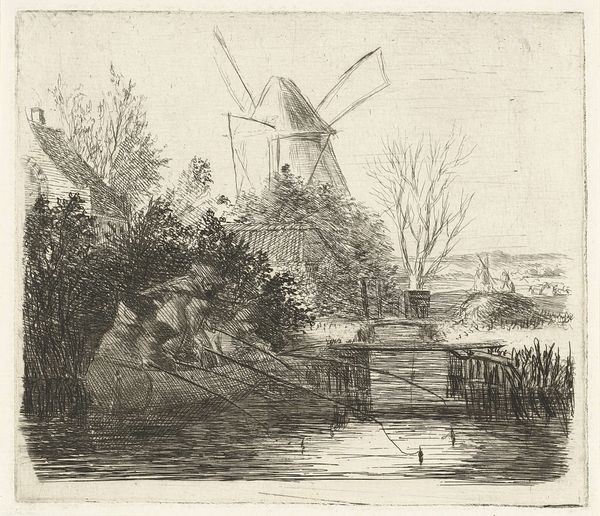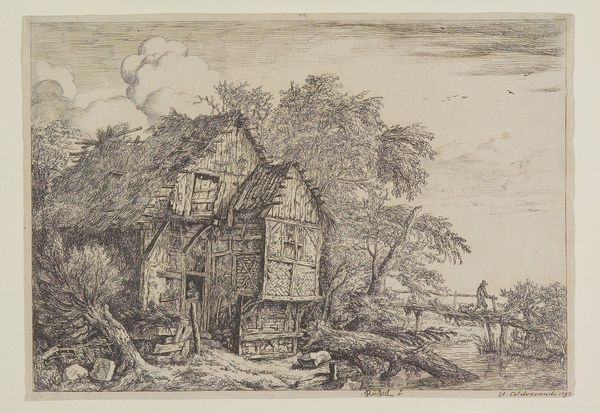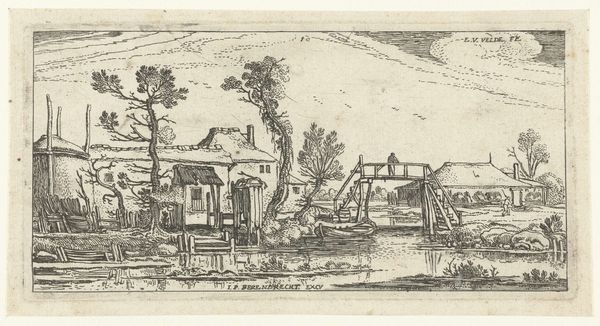
drawing, print, etching, ink
#
drawing
#
baroque
# print
#
etching
#
landscape
#
etching
#
ink
Dimensions: height 102 mm, width 152 mm
Copyright: Rijks Museum: Open Domain
This small etching, "Watermolen," meaning "watermill" in Dutch, offers a glimpse into the rural landscape of the Netherlands, though the artist remains anonymous. The image presents a quaint watermill nestled amidst trees and a flowing stream, it probably dates to the 17th or 18th century, a period when the Dutch Republic experienced significant economic and cultural development. Mills like this one were essential for grinding grain and powering various industries, playing a vital role in the nation’s prosperity. The detailed rendering of the mill's structure and surrounding landscape reflects a keen observation of the natural world. It's also important to see how the rise of landscape art coincided with the growth of a merchant class interested in depictions of their environment. To fully understand this artwork, we might consult historical records, maps, and studies of Dutch Golden Age society, which would shed light on the role of watermills in the economic and social fabric of the time. Ultimately, this etching reminds us that art is deeply rooted in the context of its creation, reflecting the values, beliefs, and material conditions of the society from which it emerges.
Comments
No comments
Be the first to comment and join the conversation on the ultimate creative platform.
